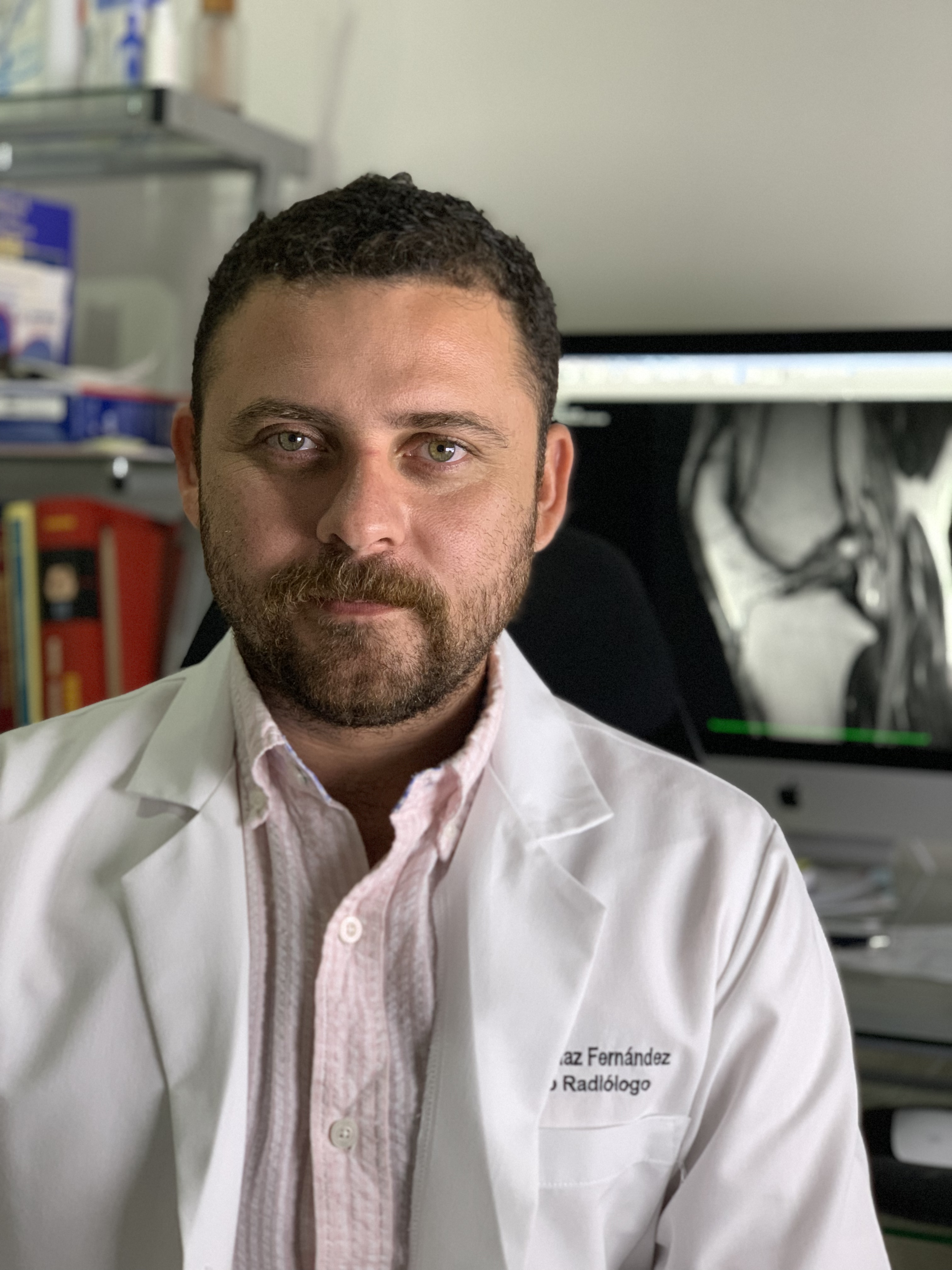European Society of Radiology: Sports imaging is the main theme of IDoR 2019. In most countries, this is not a specialty in itself, but a focus within musculoskeletal radiology. In your country, is there a special focus on sports imaging within radiology training or special courses for interested radiologists?
Francisco Diaz: We have a focus on sports imaging, but it’s not a priority in most courses. We are a small number of musculoskeletal (MSK) radiologists and always do our best to manage.
ESR: Please describe your regular working environment (hospital, private practice). Does sports-related imaging take up all, most, or only part of your regular work schedule?
FD: I probably read around six MSK magnetic resonance imaging (MRI) scans a day, around 15 plain films, and ten MSK ultrasound studies. I only carry out MSK examinations.
ESR: Based on your experience, which sports produce the most injuries that require medical imaging? Have you seen any changes in this regard during your career? What areas/types of injuries provide the greatest challenge to radiologists?
FD: Actually, football players and sports injuries related to the activity increase every year. The second biggest group is basketball players. I guess the greatest challenge is to relate the mechanism of the lesion to the imaging findings and to put together the biomechanics and anatomical findings.
ESR: Please give a detailed overview of the sports injuries with which you are most familiar and their respective modalities.
FD: I most often perform ultrasound and MRI examinations for injuries in the muscles and articular systems.
ESR: What diseases associated with sporting activity can be detected with imaging? Can you provide examples?
FD: Imaging can help detect rhabdomyolysis, a serious syndrome due to a direct or indirect muscle injury that results from the death of muscle fibres and release of their contents into the bloodstream, potentially leading to serious complications, such as renal failure. Imaging is also useful in diagnosing injuries caused by overcharge of the muscle in high-level athletes; instability of the ankle in football and basketball players; muscular lesions, direct or indirect trauma; bone avulsions; and stress fractures.
ESR: Radiologists are part of a team; for sports imaging this likely consists of surgeons, orthopaedists, cardiologists and/or neurologists. How would you define the role of the radiologist within this team, and how would you describe the cooperation between radiologists, surgeons, and other physicians?
FD: In MSK imaging, we work together with orthopaedics and sports medicine. Our role is equal because we can define the characteristics of the lesion in order to define treatment and start trauma rehabilitation.
ESR: Many elite sports centres use cutting-edge medical imaging equipment and attract talented radiologists to operate it. Are you involved with such centres? How can the knowledge acquired in this setting be used to benefit all patients?
FD: Yes, I’m the radiologist of the Mérida Football Club and the Mexican national basketball team. The shorter the athletes’ recovery, the better for the patient and the lesser the loss for the team’s finances.
ESR: The demand for imaging studies has been rising steadily over the past decades, placing strain on healthcare budgets. Has the demand also increased in sports medicine? What can be done to better justify imaging requests and make the most of available resources?
FD: The demand rises every year. To save time and resources, the idea is to make the best diagnosis possible to help reduce recovery time.
ESR: Athletes are more prone to injuries that require medical imaging. How much greater is their risk of developing diseases related to frequent exposure to radiation and what can be done to limit the negative impacts from overexposure?
FD: Exposure to radiation is constantly getting lower. Besides, MRI and ultrasound, two modalities that do not use ionising radiation, are the gold standard for static and dynamic studies.
 Prof. Francisco Díaz is professor in the radiology residency programme and radiologist at the High Speciality Regional Hospital of Yucatan State, Mexico. He is also head of the radiology department of the General Hospital Agustin O’Horan in Merida Yucatán. He is a regular lecturer on his subspecialty, MSK. He did his research fellowship in MSK MRI at the University of California San Diego with Dr. Donald Resnick, his internship in radiology of the osteoarticular systems at Chile’s Catholic University (Universidad Católica de Chile), and his internship in MSK ultrasound in Ann Arbor Hospital, Michigan, with Dr. Jon Jacobson. Prof. Díaz is editor of the journal EC Orthopaedics (ECOR) UK, and a member of the Mexican Federation of Radiology and Imaging (Federación Mexicana de Radiología e Imágen, FMRI).
Prof. Francisco Díaz is professor in the radiology residency programme and radiologist at the High Speciality Regional Hospital of Yucatan State, Mexico. He is also head of the radiology department of the General Hospital Agustin O’Horan in Merida Yucatán. He is a regular lecturer on his subspecialty, MSK. He did his research fellowship in MSK MRI at the University of California San Diego with Dr. Donald Resnick, his internship in radiology of the osteoarticular systems at Chile’s Catholic University (Universidad Católica de Chile), and his internship in MSK ultrasound in Ann Arbor Hospital, Michigan, with Dr. Jon Jacobson. Prof. Díaz is editor of the journal EC Orthopaedics (ECOR) UK, and a member of the Mexican Federation of Radiology and Imaging (Federación Mexicana de Radiología e Imágen, FMRI).